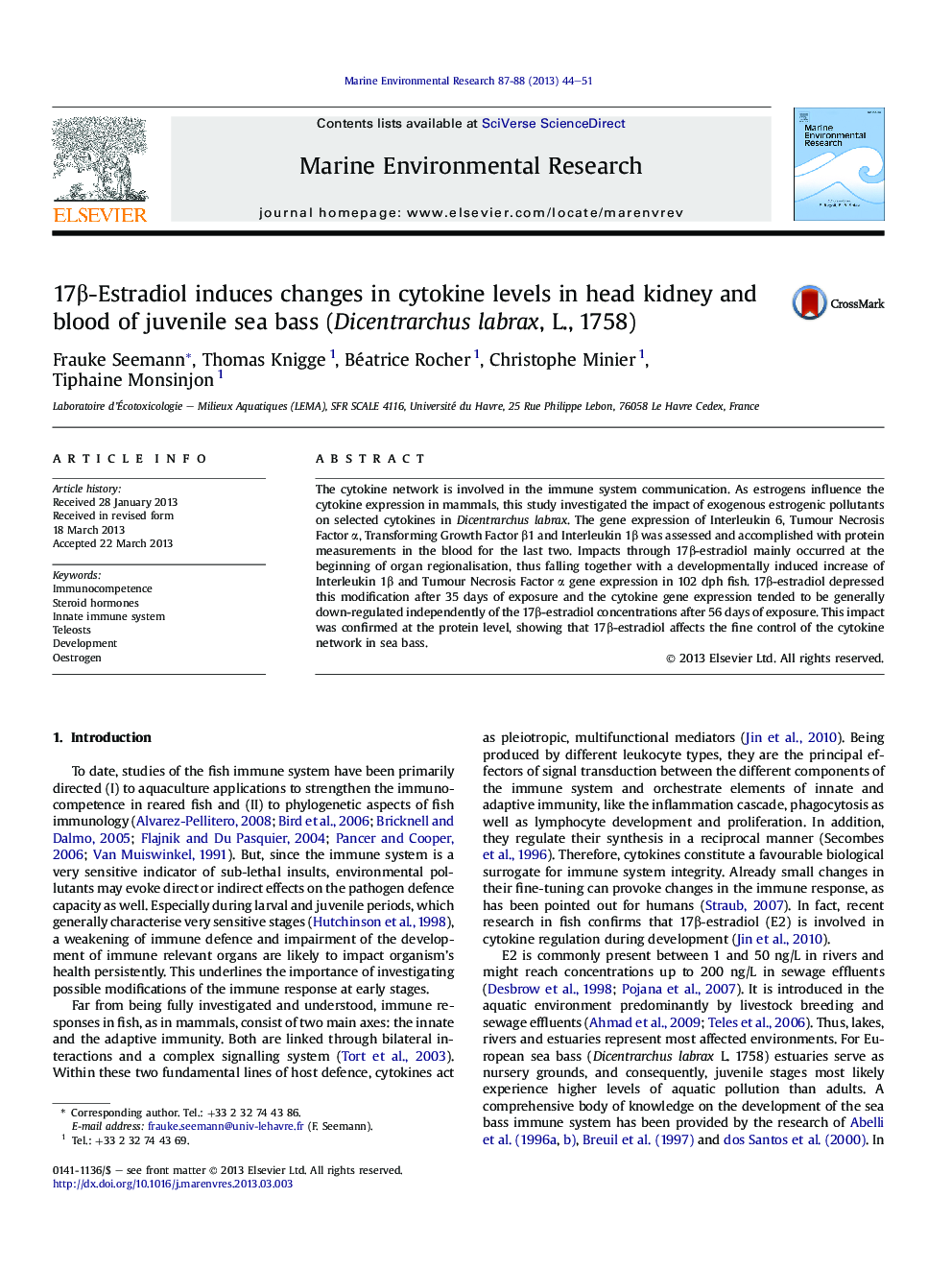| Article ID | Journal | Published Year | Pages | File Type |
|---|---|---|---|---|
| 4550912 | Marine Environmental Research | 2013 | 8 Pages |
•Juvenile sea bass were exposed to 2, 20, 200 ng/L E2 for 7, 35 and 56 days.•Changes of cytokine expression and synthesis were investigated.•E2 affected cytokine expression leads to a general depression.•Cytokine homeostasis is impaired through E2 exposure.•This may be an evidence for an altered immune response in sea bass due to E2.
The cytokine network is involved in the immune system communication. As estrogens influence the cytokine expression in mammals, this study investigated the impact of exogenous estrogenic pollutants on selected cytokines in Dicentrarchus labrax. The gene expression of Interleukin 6, Tumour Necrosis Factor α, Transforming Growth Factor β1 and Interleukin 1β was assessed and accomplished with protein measurements in the blood for the last two. Impacts through 17β-estradiol mainly occurred at the beginning of organ regionalisation, thus falling together with a developmentally induced increase of Interleukin 1β and Tumour Necrosis Factor α gene expression in 102 dph fish. 17β-estradiol depressed this modification after 35 days of exposure and the cytokine gene expression tended to be generally down-regulated independently of the 17β-estradiol concentrations after 56 days of exposure. This impact was confirmed at the protein level, showing that 17β-estradiol affects the fine control of the cytokine network in sea bass.
